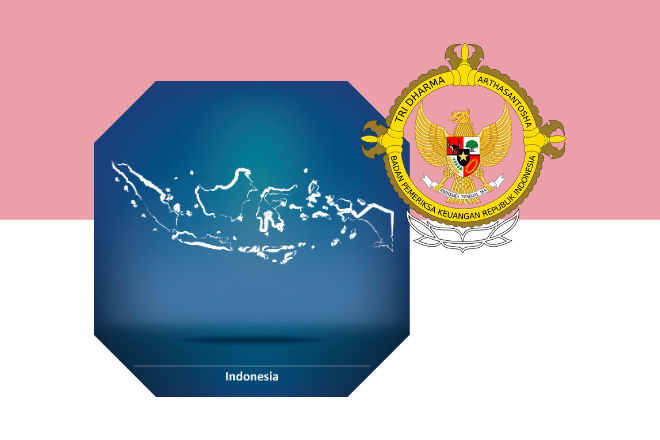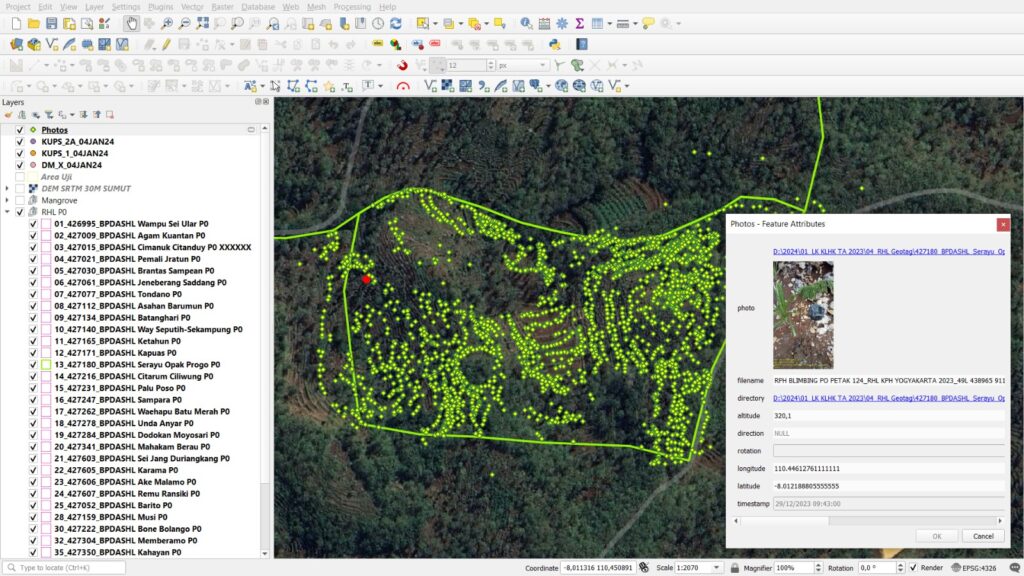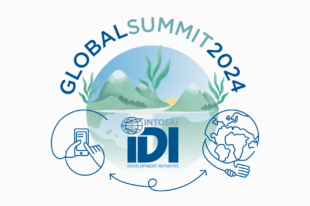Audit On Adaptation Action of Climate Change in Small Islands

Author: Ari Kristiana, Auditor at the Audit Board of Indonesia (BPK)
Climate change is one of the prevalent environmental issues that the world is facing nowadays. It is one of the greatest challenges faced by humanity, as it affects every country and has devastating effects on communities and individuals. Climate change is a significant shift on temperature, precipitation, and climate that leads to increasing sea level, warmer temperature, flood and also gradual changes on species and other organism habitat. Developing countries, especially Small Island Developing States, are the most impacted by climate change and the least able to afford its consequences. Indonesia, as an archipelago country that has more than 17,000 islands, most of which are small, also faces very high risk of climate change impacts.
The Paris Agreement, which was adopted by 196 parties, including Indonesia, focuses on preventing the global average temperature from rising 2°C and pursuing efforts to keep it below 1.5°C. The agreement also aims to increase the ability to adapt to the adverse impacts of climate change and low greenhouse gas emissions development.
To implement the Paris Agreement, Indonesia has prepared a National Determined Contribution (NDC) which contains carbon emission reduction targets until 2030 along with action plans for climate change mitigation and adaptation. Indonesia has set an unconditional reduction target of 29% and conditional reduction target up to 41% of the business as usual scenario by 2030. The target is carried out through mitigation actions such as rehabilitation of degraded land, peat land restoration, and energy mix policy.
The goal of Indonesia’s climate change adaptation is to reduce risks, enhance adaptive capacity, strengthen resilience and reduce vulnerability to climate change on all development sectors. This goal will be achieved through, amongst other things, enhanced climate literacy, local capacity strengthening, improved knowledge management, convergent policy on climate change adaptation and disaster risks reduction, and application of adaptive technology.
According to Indonesia Meteorogical, Climatological, and Geophysical Agency data, most disasters due to climate change are hydrometerological, such as floods, storms, landslides, whirlwinds, etc. Small islands are particularly vulnerable to the impacts of climate change. Unfortunately, most of the small islands have inadequate infrastructure such as transportation and health facilities, so the communities often are relatively underdeveloped in terms of economic, social and environmental aspects. As a result, these communities will face a much higher risk of the impacts of climate change. The Government must make concrete actions to strengthen the resilience of communities located in disaster-prone areas, among others by:
- Strengthening early warning and emergency response systems to disasters in the community.
- Strengthening vulnerability data and analysis
- Strengthening health system preparedness
- Enhancing communication, information, and education to local communities to raise awareness of disaster risks due to climate change.
The Supreme Audit Institution (SAI) of Indonesia, through the audit authority, has a crucial role to ensure that the Government has carried out adaptation of climate change actions properly, especially in small islands and disaster-prone areas. Audits conducted to assess climate change mitigation and adaptation actions need to be routinely carried out. Therefore, the SAI can provide comprehensive recommendations to the Government so that climate change adaptation actions are well implemented and bring the impact to the community.
In recent years, SAI Indonesia (BPK) has routinely conducted audits related to climate change, especially in regards to mitigation, such as audits of energy mix policies, prevention of deforestation, and forest rehabilitation. Meanwhile, audits related to climate change adaptation actions, especially in small islands, have not been carried out in an integrated manner.
There are several challenges in conducting audits in small islands, which require adequate preparation. These challenges include:
- Limited accessibility. Many remote areas are difficult to reach due to the lack of transportation facilities and infrastructure, and the high cost of travel.
- Inadequate infrastructure, especially energy infrastructure and telecommunication networks.
- Limited resources. The number of auditors and audit time allocated are limited, while the number of islands or regions to be examined is quite large. Due to limited accessibility, audits on small islands will take longer. Auditors must be able to determine the audit priority based on audit risk.
Using technology can help overcome some of the challenges presented above. For example, in recent years, BPK has been actively using Geographic Information System (GIS), including the use of geo-tagging and satellite imagery, video conferencing, and big data to support its audit.
Geospatial information pertains to a specific location, associating each entity or phenomenon to an exact location on Earth. These computer tools allow us to store, integrate, maintain, visualize and analyze data from various sources and create geo-referenced databases and thematic maps.
The International Organization of Supreme Audit Institutions (INTOSAI) published International Standards of Supreme Audit Institutions (ISSAI) 5540, concerning the use of geospatial information in auditing disaster management and disaster-related aid. The purpose of ISSAI 5540, to explain the benefits of using geospatial information in audit works, introduces GIS as an audit tool and encourages auditors to improve the use of geospatial information in their work (INTOSAI, 2013).
In the last two years, BPK used geotagging and satellite images to ensure that all trees in the forest rehabilitation program have been planted as planned. BPK used video conferencing for remote testing for road and energy infrastructure development.
In audits related to climate change adaptation in small islands, the use of GIS can help, for example, to remotely confirm mangrove planting for disaster risk deduction and to ensure that planting and cultivating crops has been done properly. The use of GIS in the audit was carried out to determine the location of each planted mangrove seedling in the planned area. To examine the planting process, the auditee was required to take a geotagged photo of each plant seedling. The auditor then examined all the geotagged photos that had been submitted by extracting the geographic coordinates of all photos into vector data and then comparing them with the vector data of the planned area. If needed, physical examination to verify the validity of the geotagged photos may be conducted on a sample basis.

After 5 years or more, the SAI can conduct a follow up review, and re-examine the satellite imagery or aerial photographs to assess the success rate of mangrove planting programme.
Meanwhile, the use of video conferencing has improved the way SAI Indonesia addresses climate change related audits. Auditors used video conferencing to more easily communicate with entity officials and conduct physical examinations and remote audits.
However, there are also challenges faced as auditors utilize technology, especially felt in audits related to climate change and small islands. Internet interruptions are a major obstacle. Sometimes, the network connection is not very reliable so auditees may have difficulty presenting evidence. Auditors need to consider these risks in audit planning stage and to explore the alternative procedures.
It is expected that, with the help of technology, climate change adaptation audits in small islands can be conducted more frequently and comprehensively. Thus, BPK can identify recommendations so that adaptation actions can be improved and implemented effectively and efficiently. This is especially important for adaptation actions in small outer islands and disaster-prone areas. In the end, SAIs have a role in ensuring that their nations’ climate change adaptation goals of reducing risk, increasing adaptive capacity, strengthening resilience and reducing vulnerability to climate change in all development sectors can be achieved.
About the Author:
Ari Kristiana is an auditor at the Audit Board of Indonesia (BPK) She completed her bachelor degree at the State Accounting College (STAN) in 2000, and obtained a master’s degree in 2005 from the University of Indonesia.





